The Data
As all the testing in this round-up was performed with the exact same equipment, using the exact same methods I have decided to keep each radiators page uncluttered by posting our testing methodology, test set-ups and equipment used in a single location. To see exactly how the tests were carried out, details of the test set ups and equipment used, please head back to the RRU Test Setup page.
Restriction Test
It’s generally agreed that radiators are one of, if not the least restrictive components in the water cooling loop. There are some exceptions however, so this must still be verified through testing:
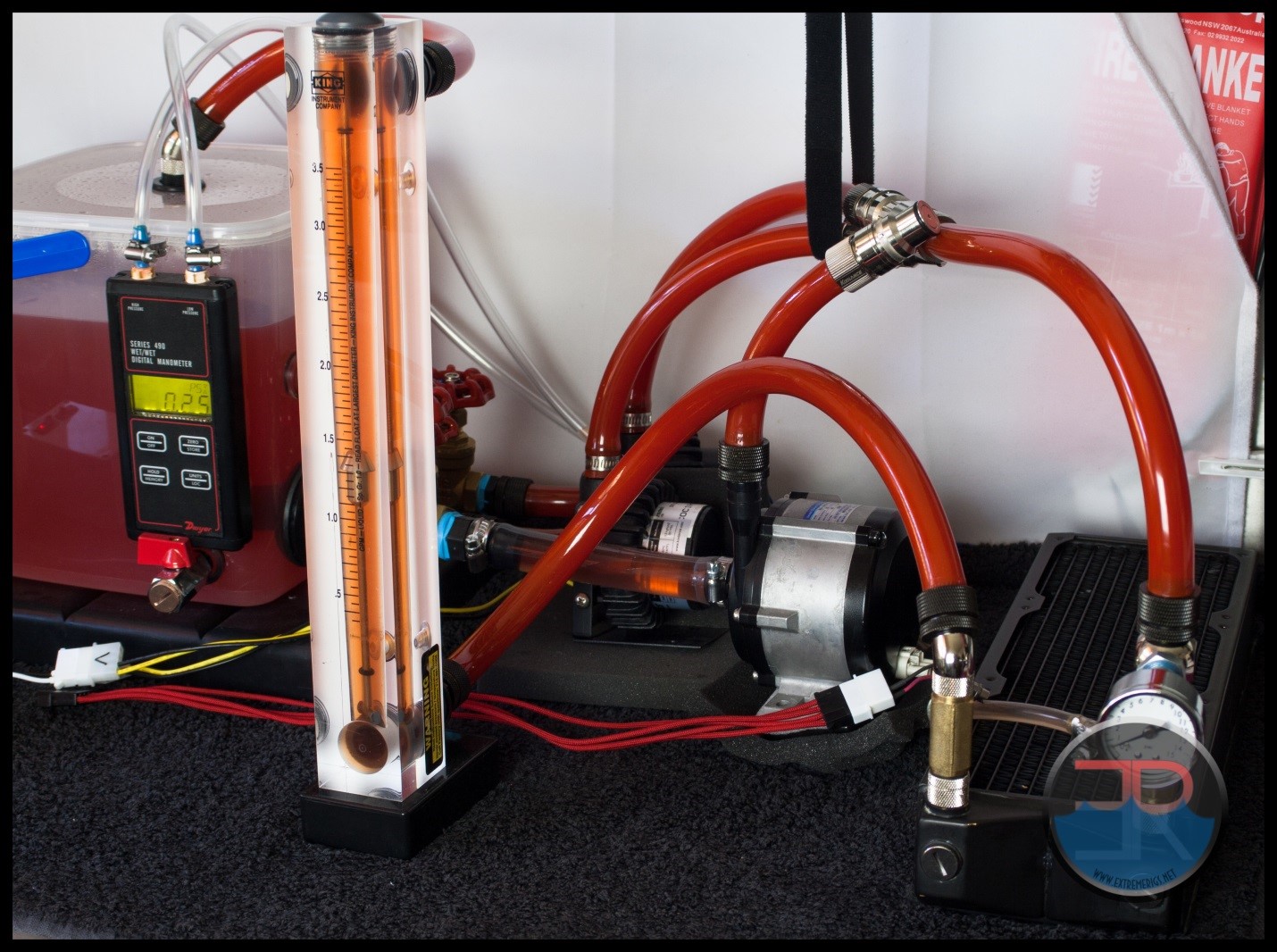 The above photo is for referencing the restriction test bench The Koolance HX-CU1020V is not loaded so please disregard the data in the picture as it does not relate to it’s test results.
The above photo is for referencing the restriction test bench The Koolance HX-CU1020V is not loaded so please disregard the data in the picture as it does not relate to it’s test results.
Here is the raw data at the tested flow rates, displaying the measured Differential Pressure across the radiator as flow rate was increased.
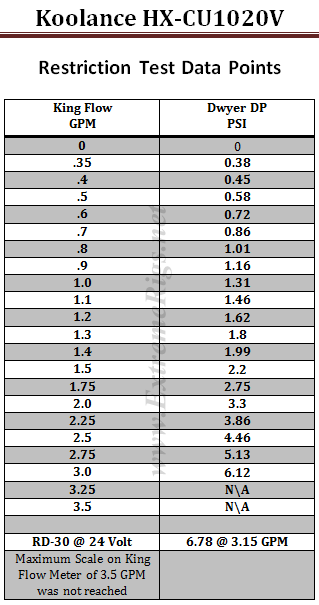
Only once before has the Iwaki RD-30 at 24 Volt not managed to achieve the 3.5 gpm maximum flow rate reading on the King Flow Meter. This is a powerful pump and demonstrates immediately that this rad has a very high restriction level.
However numbers in isolation can only tell half the story. By plotting against other components it more easily shows the whole story.
We use a HeatKiller 3.0 CPU block as the reference in these plots for two reasons. Firstly there is no chance of the plot being cluttered by curves overlapping and secondly it gives a reference point against a fairly common loop component of average restriction.
As with all the radiator restriction plots the maximum flow rate displayed has been limited to 2.0 GPM as we suspect there are very few systems that operate above 2.0 GPM. For more information on how to read a restriction plot check out our guide.
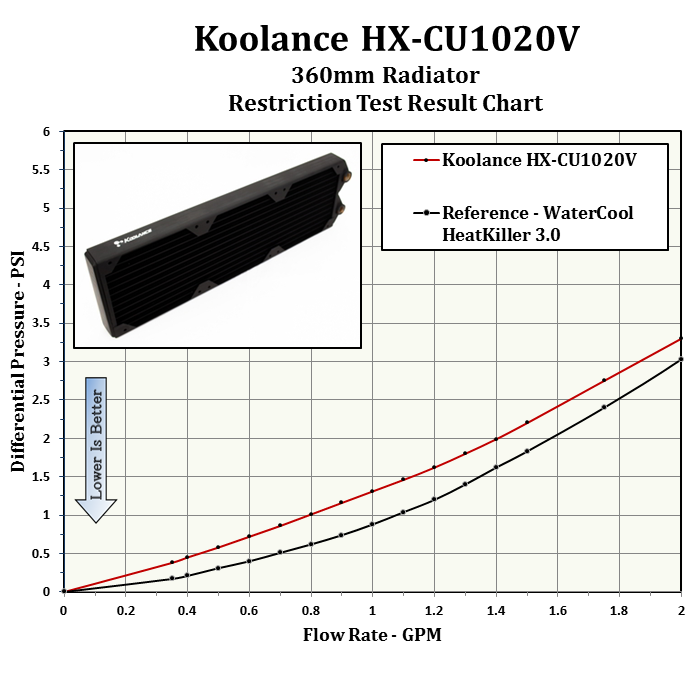 This is a first !!!!
This is a first !!!!
Never have we seen a radiator start off and stay above the restriction curve of the reference block. Let’s do some more comparisons before making a conclusion.
The next three plots show the CUV’s restriction level relative to other slim radiators in the test group at 3 different flow rates – what we consider to be low, medium and high system flow rates.
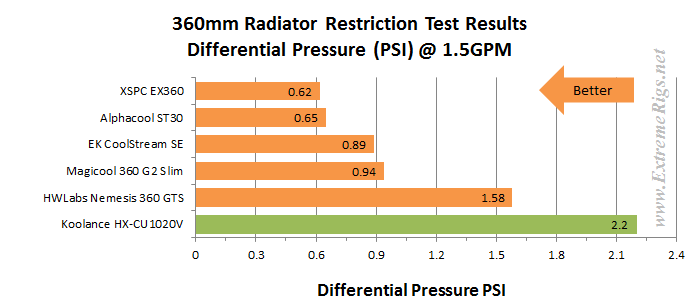 From these tables it would be fair assessment to call the HX-CU1020V a high (or even very high) restriction radiator when compared to the other slims, but before we make that conclusion let’s take a quick look at the restriction levels all our 360 rads at 1.0 gpm.
From these tables it would be fair assessment to call the HX-CU1020V a high (or even very high) restriction radiator when compared to the other slims, but before we make that conclusion let’s take a quick look at the restriction levels all our 360 rads at 1.0 gpm.
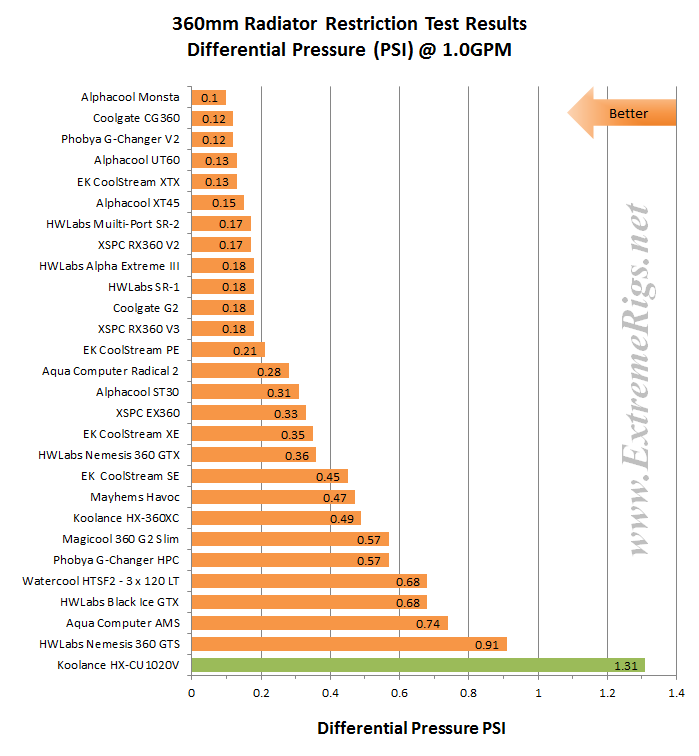 Previously we had criticized the Nemesis GTS as being unnecessarily high in restriction. The CUV however gives us a new standard bearer in high restriction radiators. I think I will have to classify this rad as extremely restrictive, and as such I advise extra planning if intending to use more than one of these rads in a loop as overall system flow rate will be compromised.
Previously we had criticized the Nemesis GTS as being unnecessarily high in restriction. The CUV however gives us a new standard bearer in high restriction radiators. I think I will have to classify this rad as extremely restrictive, and as such I advise extra planning if intending to use more than one of these rads in a loop as overall system flow rate will be compromised.
Onwards to Thermal Performance!







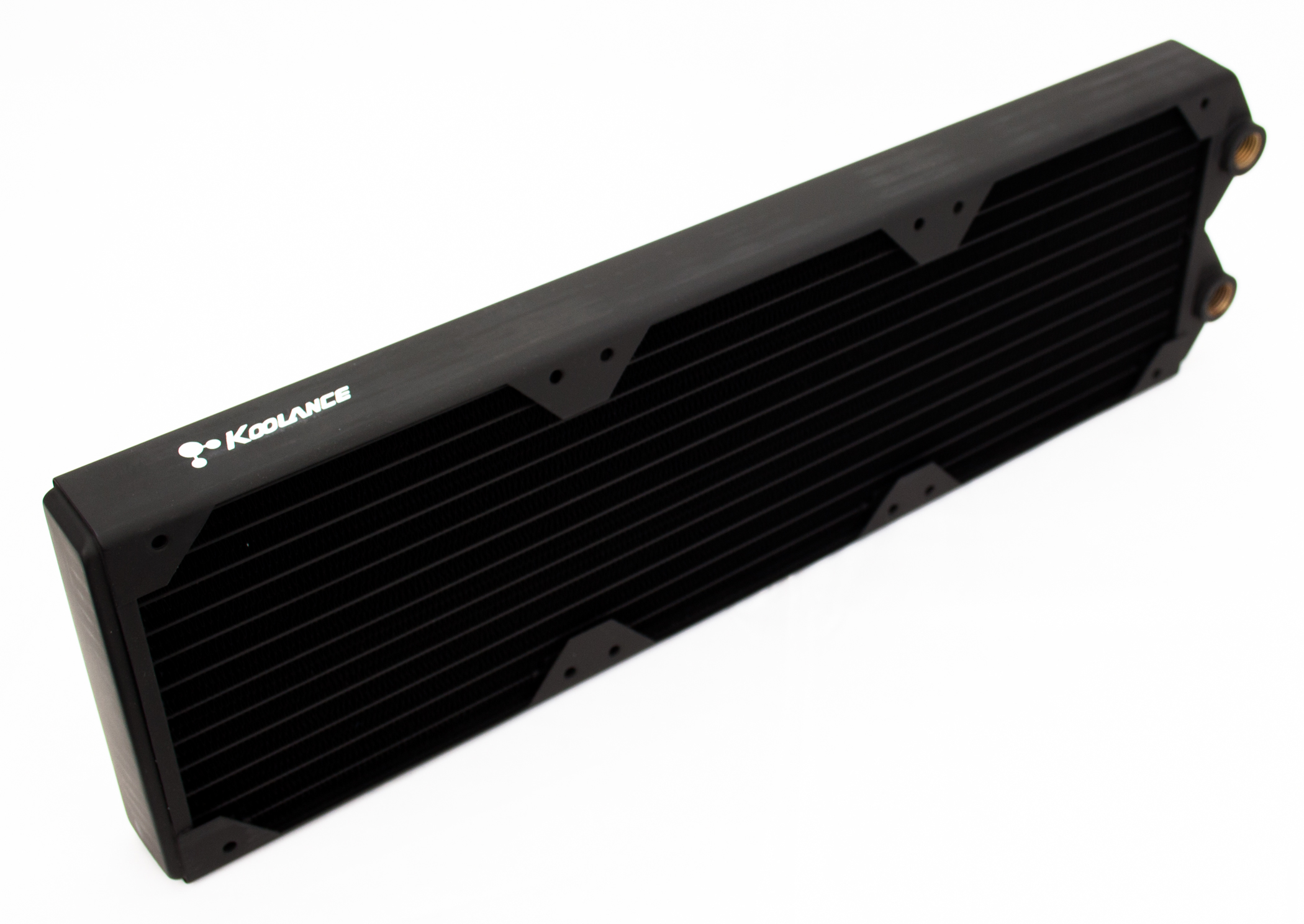
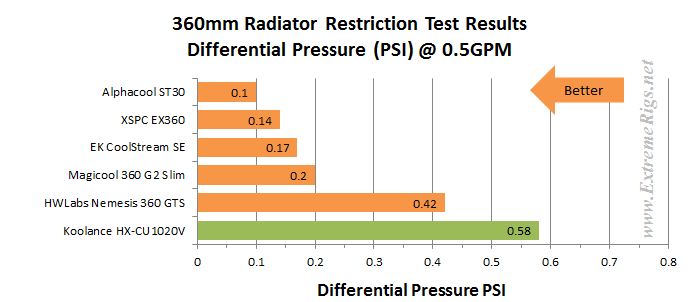
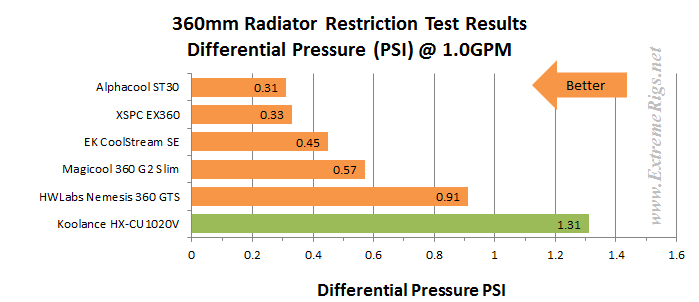



Okay, so this is the antithesis of the Nemesis GTS: great at push pull high speeds, were as the Nemesis GTS is king of push only low / medium speeds. Glad I got two Nemesis GTS for my build.
As always, thank you for the great review and additional data to the radiator database.
[…] Koolance HX-CU1020V 360mm Radiator Review […]
Your overall score lacks the scrutiny and precision that you have applied to your superb test and measurement criteria.
The feature set (extra ports, etc.) and paint finish have no bearing on thermal performance and when this low marking for ‘features & quality’ is applied as a major constituent of the overall summary score this excellent radiator immediately looks second rate to the casual reader and beginner in the field of water-cooling.
Many people who visit your site will not read or necessarily understand your entire review or the graphs which look at factors outside the original design spec for this radiator, i.e. it was not really intended to be used with low speed fans, hence the high fin density. Also most enthusiast and professional builders will be using a push/pull design, high static pressure fans and, spacing permitting, shrouds to reduce the ‘dead spot’ created by 120mm fan centre hubs ( or 140mm based radiators)
You write for a site called extremerigs not ‘boy racer add-ons’ and although I do not dispute the fairness and balance within your text, other than the over-emphasis on “extreme restriction” which is easily overcome, your final score is misleading. I am not suggesting that you are being specifically unfair to Koolance, but in my standing as a Senior Design Engineer in many fields of engineering for the past 24 years, your scoring puts too much emphasis on the non-essential.
As an enthusiast, I have built 80+ water-cooled rigs since 2003, three of them with large industrial grade heat exchangers (peltier based) running coolant down to -55 Celsius. Most people cannot afford or be bothered with the complexity of ‘chilled’ systems, but multiple radiator systems have become increasingly popular over the past decade. I have used multiple units of this excellent radiator and its thicker ‘big brother’ in more than 30 builds and various HW Labs Black Ice variants in around 20 builds with complex Quad SLI configurations without any issues or compromise!
Unfortunately, over the past 3 years the market has become flooded with flashy ‘boy racer’ radiators which may look impressive and have many extra features, but in what ways do these improve cooling performance?
Many of these features are about as useful as the range of ‘viewing windows’ which were being sold for HDs and PSUs until the worldwide economic crisis hit. I do not dispute that some features make the design process easier when deciding the route for tubing to water-blocks and manifolds, but adding a ‘universal’ feature set to every radiator design will add unnecessary cost.
Comments are closed.